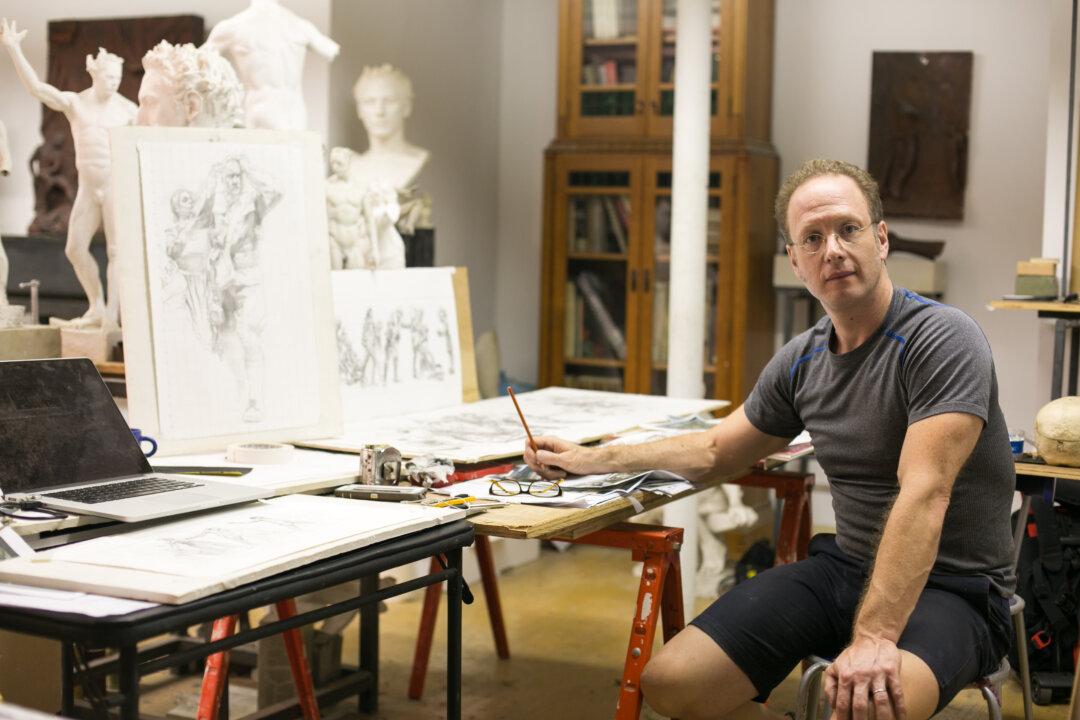NEW YORK—Sabin Howard is in the throes of a monumental task. The master sculptor has to conceptualize a horrific slice of history and then translate it into a sculptural form that is engaging and worthy of honoring incredible sacrifice.
“It’s pretty epic when you lose 10,000 people every hour,” he said.
Nearly a year ago, Howard and the young visionary architect Joe Weishaar won the U.S. World War I Centennial Commission’s competition to create a national memorial at Pershing Park in Washington, with views to the White House.
During the last five months of the U.S. involvement, which effectively ended the war, more than 53,000 U.S. soldiers died. Overall, after 1,560 days of fighting, more than 16 million lives, military and civilian, were lost worldwide.
[gallery size=“large” ids=“2181231,2181232,2181233”]
The commission is looking to raise $50 million in private funds for the National World War I Memorial and hopes to inaugurate it on Nov. 11, 2018, the 100th anniversary of the end of the war.
Howard envisions a visual narrative of World War I that will help people contemplate our shared humanity, for many generations to come. He called his in-progress design “a soldier’s journey.”
“I’ve redesigned the whole thing at least a dozen times,” he said, looking at a long scroll of photographs on his studio floor in the Bronx in September. It showed models in dynamic poses, wearing World War I uniforms from 100 years ago.
[gallery size=“medium” ids=“2181247,2181227,2181228”]
He’s had several sessions with models. He directs them to move in slow motion and takes photographs of the poses, gestures, and expressions he wants to convey. From the photographs, he makes sculptural-looking drawings as references for a three-dimensional maquete (scaled model), from which the actual monument will be created.
Currently, he’s working on the blueprint for his latest redesign of the memorial: an 81-foot-long bas-relief depicting about 40 figures, to be cast in bronze. In terms of scale, it’s nearly two-thirds the length of Michelangelo’s Sistine Chapel ceiling, and it will be the largest figurative sculpture created in the United States and Europe since the Albert Memorial in London was completed 144 years ago.







